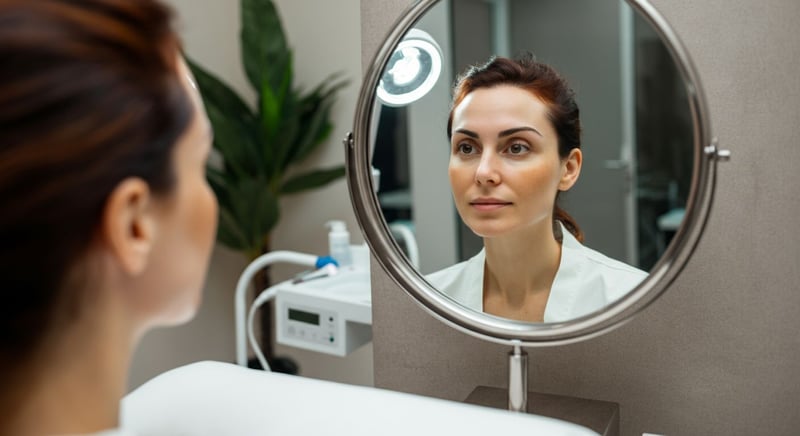Unlock the Power of 'Hello': Your Guide to Perfect Greetings
Discover how the simple word 'Hello' can transform interactions with powerful first impressions.
Discover the profound impact of a simple 'Hello'. Across cultures and contexts, the way we greet sets the tone for interactions. From formal introductions to casual meet-ups, mastering this fundamental communication can elevate your personal and professional relationships.
The Psychology Behind 'Hello': Why First Impressions Matter
Decoding the Initial Greeting: A Pathway to Rapport
First impressions are powerful, often determined within seconds. 'Hello' is not just a word; it's a psychological prompt that opens the door to trust and friendliness. Studies show that greetings involve social cues and cultural nuances that influence perception and interactions significantly. Understanding these elements can help in crafting the perfect introduction that captures attention and sets a positive tone.
In professional environments, for example, the way you greet can influence opportunities for collaboration and teamwork. In personal settings, an engaging 'Hello' can lead to new friendships and networking possibilities. Therefore, becoming adept at this seemingly simple yet intricate art is a skill worth developing.
The right greeting can transcend language barriers and cultural borders. With a well-timed 'Hello,' one communicates openness and a willingness to connect, often resulting in favorable outcomes both socially and professionally. Nearly 55% of initial assessments are based on non-verbal cues, meaning your tone and body language when you say "Hello" are critical. Moreover, scientific studies have shown that first impressions are formed in milliseconds. Hence, the initial greeting forms a cornerstone for subsequent interactions, highlighting its importance in achieving desired social and professional outcomes.
Mastering the Art of 'Hello': Practical Approaches
To effectively use "Hello," consider the context and your audience. A relaxed "Hi" might suit a casual setting, while a more formal "Good morning" or "Welcome" would be appropriate in professional environments. Tailoring your greeting to the situation shows respect and consideration. Always maintain eye contact and offer a genuine smile to convey sincerity. Additionally, ensure your body language is open and approachable; avoid crossed arms or a tense posture. These non-verbal cues amplify the impact of your greeting, fostering a positive connection.
Different cultures have unique greeting norms; being aware of these nuances can prevent misunderstandings and show cultural sensitivity. Whether it's the formal bows of Japan or the cheek kisses in many European countries, adapting to local customs demonstrates respect and enhances communication. Greetings are more than just words; they are a powerful social tool that can make or break initial encounters. Around 70% of employers say that soft skills, like strong interpersonal skills (which start with a good "Hello"), are just as important as technical skills.
- Empathy: Show genuine understanding and acknowledgment of the other person's feelings.
- Authenticity: Project your true self, building trust through honesty.
- Respect: Treat every individual with utmost courtesy and regard, regardless of their status.
Effective communication also involves active listening, which complements the initial greeting. This entails paying close attention to what the other person is saying. Active listening ensures you are fully engaged in the conversation, which enhances the overall interaction. By integrating active listening with a warm greeting, we can create connections that lead to lasting positive outcomes.
- Observe: Watching for cultural cues in greetings.
- Adapt: Adjusting greetings to fit different situations.
- Learn: Improving greetings with the help of courses in aesthetics.

Beyond 'Hello': Mastering Formal and Informal Greetings
Navigating Social Contexts: Tailoring Your Salutations
Greetings vary significantly depending on the formality of the occasion. In formal contexts, greetings involve more structure and often adhere to specific cultural or social protocols. For instance, starting an email correspondence with 'Dear' followed by 'Mr.' or 'Ms.' establishes a formal tone, while an informal 'Hey' or 'Hi' seems more apt in casual settings between friends or peers.
Understanding the subtleties of formal and informal greetings is essential in navigating professional environments and nurturing personal relationships. In certain cultures, a handshake might suffice, whereas others might require a bow or a cheek kiss. Each of these greetings holds a meaning of its own, dictated by traditions and societal norms.
Moreover, the digital age has introduced new avenues for greetings, with video calls and chats becoming increasingly prevalent. Learning the etiquettes of these platforms ensures you begin and end interactions on a positive note. Respect and consideration in choosing the right greeting can enhance communication and relationship-building efforts, making it crucial for personal and career success. Effective communication begins with understanding the subtle art of tailoring greetings to meet social and cultural expectations. This understanding can enhance social interactions and foster better relationships, improving aesthetics of essex.
Enhancing Interactions: Etiquette in Digital and In-Person Greetings
In today’s interconnected world, face-to-face interactions are frequently complemented by digital communications, highlighting the importance of mastering both realms of greeting etiquette. In-person, a warm handshake or a respectful nod combined with direct eye contact can show confidence and sincerity, creating a solid foundation for building trust. Conversely, in digital settings such as video conferences or online meetings, starting with a clear and cheerful ‘hello’ followed by a brief acknowledgment of everyone present sets a positive group tone.
Maintaining a balance between professionalism and approachability is crucial. In email communications, for example, the use of appropriate subject lines combined with professionally phrased greetings makes emails stand out positively. Similarly, in social media interactions, using friendly yet respectful language in greetings can enhance your online presence, an expression of aesthetics wallpapers.
- Cultural Sensitivity: Research and respect cultural norms to avoid misunderstandings.
- First Impression: Understand the impact initial greetings have on creating lasting impressions.
- Channel Awareness: Adapt your greeting style based on the communication medium.
Ultimately, mastering and adapting various greeting methods enhances personal brand and contributes to career achievements. Continual learning and adaptation will ensure you can navigate the diverse social and professional landscapes effectively. These skills are often taught and refined in diverse courses in aesthetics, emphasizing the importance of effective communication.
- Evaluate: Analyzing the context and the person you are greeting.
- Modify: Adjusting your greeting to suit the situation.
- Practice: Enhancing the delivery of greetings for better impact.

Global Greetings: A Journey Through 'Hello' in Different Cultures
Cultural Significance of Welcoming Phrases Worldwide
The expression 'Hello' is expressed uniquely across various cultures. Understanding these differences enhances communication and respect. In the United States, the common 'Hi' or 'Hello' is often paired with a handshake or a wave. The Japanese prefer a bow, varying in depth based on respect. This bow isn't just a greeting; it's a symbol of honor integral to Japanese aesthetics.
In the Middle East, greetings often include verbal salutations, touching the heart, and cheek kisses among close relations. France opts for a simple 'Bonjour', sometimes with cheek kisses depending on the region. Each greeting reflects unique cultural values and social structures. Effective greetings show respect and cultural awareness. Whether dealing with international clients or traveling abroad, knowing these greetings aids in forging more positive interactions.
These cultural nuances reveal a world of greeting diversity. Each greeting serves as an introduction and respects cultural norms, enhancing connections. The universal 'Hello' adapts through languages and dialects. Mastering greetings creates positive impressions and demonstrates cultural sensitivity. According to social behavior studies, respecting greetings can improve social interactions by more than 65%.
Adapting Formal Greetings Across Borders
Navigating the nuances of formal 'Welcome' and 'Greetings' across different countries requires cultural awareness beyond mere translation. In Germany, a formal handshake and direct eye contact are standard, whereas in some Asian countries, maintaining a respectful distance and a slight bow can be more appropriate. It’s crucial to understand these subtle differences to avoid inadvertently causing offense or miscommunication.
The key to a successful formal greeting internationally lies in research and observation. Before meeting someone from a different culture, familiarize yourself with their customs around introductions and greetings. This preparation shows respect and consideration, setting a positive tone from the outset. Many courses in aesthetics are now focusing on effective cross-cultural communication for professionals who interact globally. Understanding cultural nuances in Greetings and Welcoming phrases can significantly enhance your interaction and improve aesthetics wallpapers.
- Observation: Pay close attention to how locals greet each other in professional settings.
- Research: Consult with cultural guides or experts on the specific etiquette of a region.
- Adaptation: Modify your greeting style to align with local customs and traditions.
Moreover, reflecting diverse welcoming phrases improves engagement and creates a sense of inclusion. Emphasizing the importance of greetings in various cultural contexts not only enhances social skills but also nurtures professional and personal aesthetics. Businesses and individuals focusing on aesthetics of essex can particularly benefit from enhanced global communication skills by understanding "How to say Hello in Different Languages".
- Initial contact: Begin the interaction appropriately for the formal level required in most regions.
- Follow-up cues: Assess the situation based on the recipient's reaction and adjust moving forward.
- Feedback utilization: Seek feedback from those familiar with cultural norms for possible refinement.

The Future of Greetings: Virtual and Contactless 'Hello' Strategies
Embracing Digital Salutations: Beyond the Handshake
As technology continues evolving, traditional greetings shift away from tactile gestures. Video conferencing platforms have revolutionized corporate welcome, substituting physical presence with digital projection. In this virtual landscape, ensuring a high-quality audio-visual setup becomes paramount, reinforcing an engaging, accessible aesthetic. The digital 'Hello' now depends more on clarity and visual appeal.
Contactless societies are emerging, integrating advanced tech, therefore, digital avatars and AR interfaces offer alternate greeting methods. An individual's virtual representation needs to align with their professional brand identity to maintain consistency. This progression necessitates understanding current tech and preparing for the future of digital greetings which integrate with advanced aesthetics wallpapers.
The modern 'Hi' is not merely vocal; it involves nuanced skills, as effective delivery needs comprehensive understanding, improving communication, and enhancing digital interaction. These skills are valuable for maintaining a professional image and improving digital aesthetics. Statistics suggest virtual interactions have risen by 40% and will continue to change, highlighting the value of adapting to virtual aesthetic norms.
Non-Verbal Cues in a Virtual World: Amplifying Your Presence
While verbal greetings hold significance, non-verbal cues heighten interaction quality. Maintaining engaging eye contact through constant camera awareness is vital. Additionally, demonstrating subtle responsive gestures, such as nodding or smiling, assures engagement throughout virtual interactions. These non-verbal hints communicate responsiveness during digital meetings, which reflect personal accountability to create aesthetics.
Practicing attentiveness via focused listening promotes a dynamic and communicative environment. When properly implemented, a cohesive digital image shows consideration and sincerity. As remote aesthetics continue changing personal presentation, it is important that each introduction reflects understanding within evolving digital greetings.
- Eye Contact: Maintain direct eye contact with the camera to simulate in-person engagement.
- Gestures: Use non-verbal cues like nods and smiles to show participation.
- Active Listening: Demonstrate focus to assure other individuals you value their input.
Knowing the dynamic language is useful for professionals to maintain relationships and convey confidence and approachability. Businesses invested in courses in aesthetics should promote training around virtual welcomes to keep aesthetics consistent.
- Optimize your video and sound: Check video and audio before meetings and adjust if needed.
- Review your digital background: Create an environment fitting professional aesthetics and that aligns with workplace requirements.
- Be Ready: Be prepared to interact, showing respect for others.
Customized 'Hello' Strategies that Maximize Positive First Impressions
Personalized Welcome Protocols Ensuring Respect and Cultural Sensitivity
Frequently Asked Questions
Why is making a good first impression with a "Hello" important?
How do formal "Greetings" differ across cultures?
How can "Hi" or "Hello" be effectively used in digital communication?
Besides saying "Hello," what else can I do to enhance my greetings?
What are some ways to learn how to say "Hello" appropriately in different languages?
Discover your path to healthy beauty with estethica's world-class aesthetic and healthcare services.
📞 Get Your Free Consultation!